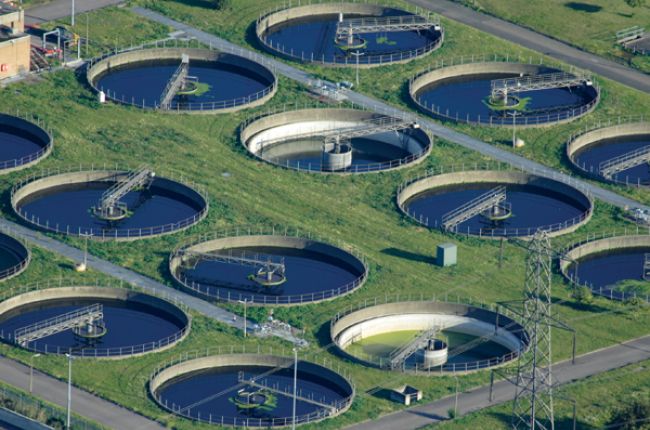Effective Waste Water Treatment Systems: Key Approaches and Benefits
Effective Waste Water Treatment Systems: Key Approaches and Benefits
Blog Article
Strategic Approaches to Improve Drainage Treatment Performance and Reduce Ecological Impact
In the realm of waste water therapy, the quest for improved effectiveness and minimized environmental impact is a continuous difficulty that demands critical options. The integration of advanced therapy innovations, energy-efficient processes, source recuperation techniques, enhanced nutrient elimination strategies, and wise tracking and control systems represents a multifaceted structure for resolving these pushing issues.
Advanced Treatment Technologies
Sophisticated membrane layer filtration systems have transformed sophisticated wastewater treatment processes, dramatically enhancing the elimination of impurities. This technology has confirmed to be extremely efficient in getting rid of a vast array of impurities, consisting of drugs, hefty steels, and natural compounds, which are commonly testing to get rid of with standard therapy approaches.
Moreover, membrane filtration systems offer numerous benefits over standard therapy techniques. They need less space, generate higher-quality effluent, and are extra immune to changes in influent water quality. Additionally, these systems are highly functional and can be conveniently incorporated into existing treatment plants or utilized as standalone systems for decentralized applications. As the need for tidy water proceeds to increase, the adoption of sophisticated membrane filtration technologies is important to make sure reliable and lasting wastewater therapy practices.
Energy-Efficient Procedures
The assimilation of energy-efficient processes in wastewater treatment systems is important for maximizing resource application and decreasing functional costs. One crucial approach to improving power efficiency in wastewater therapy is the usage of innovative aeration systems, such as great bubble diffusers or surface aerators, which can boost oxygen transfer effectiveness and reduce energy intake.
Furthermore, enhancing process control and automation through making use of advanced sensing units and monitoring systems can improve total power efficiency by adjusting operations in real-time based upon real need and conditions. Applying power audits and frequently monitoring energy efficiency indicators are vital methods to determine areas for improvement and track energy-saving initiatives effectively. On the whole, the fostering of energy-efficient procedures in wastewater treatment not only benefits the setting yet likewise adds to long-term cost savings and functional sustainability.
Source Healing Strategies
With a concentrate on maximizing source usage and sustainability in wastewater treatment systems, the execution of source healing strategies becomes a crucial facet in improving operational efficiency. Source recuperation methods in wastewater treatment involve the recognition and removal of valuable resources from the waste stream, thereby turning what was as soon as thought about waste into a valuable possession. By executing resource recuperation techniques such as nutrient removal and healing, power generation from organic issue, and the manufacturing of reusable water, wastewater treatment plants can lessen environmental impact while taking full advantage of efficiency.

Enhanced Nutrient Removal Techniques
Implementing innovative nutrient removal methods is crucial for maximizing the performance of wastewater therapy systems. One of the essential strategies used for boosted nutrient elimination is the process of biological nutrient elimination discover here (BNR), which entails the removal of nitrogen and phosphorus with biological procedures.

In enhancement to BNR, progressed treatment techniques such as membrane layer bioreactors (MBRs) and built wetlands can likewise be employed to enhance nutrient elimination effectiveness. By integrating these sophisticated nutrient removal strategies into wastewater therapy systems, districts and sectors can efficiently reduce nutrient air pollution and secure the atmosphere.
Smart Monitoring and Control Solution
Utilizing advanced modern technology, the assimilation of clever surveillance and control systems changes the operational effectiveness of wastewater therapy facilities. These systems integrate sophisticated sensing units and data analytics to continually keep an eye on key parameters such as pH degrees, turbidity, dissolved oxygen, and flow prices in real-time. By collecting and examining this information, operators can acquire important insights right into the efficiency of the therapy processes, enabling proactive modifications to optimize therapy efficiency.
Smart monitoring and control systems additionally sustain remote surveillance abilities, enabling operators to access real-time data and control features from off-site areas. This remote access boosts functional versatility and responsiveness, allowing speedy treatments in case of system breakdowns or variations in influent high quality. The predictive maintenance capabilities of these systems assist protect against equipment failures and read this post here reduce downtime, eventually boosting the overall integrity of wastewater treatment operations.
Verdict
Finally, critical techniques such as sophisticated therapy innovations, energy-efficient processes, source healing strategies, improved nutrient elimination strategies, and clever monitoring and control systems play a critical function in improving wastewater therapy effectiveness and minimizing ecological impact. By implementing these methods, wastewater therapy plants can boost their total efficiency, lower power intake, recoup beneficial resources, and guarantee conformity with ecological laws. These methods are crucial for reliable and sustainable wastewater administration methods.

In verdict, critical methods such as innovative treatment modern technologies, energy-efficient processes, source recovery methods, enhanced nutrient elimination techniques, and clever monitoring and control systems play a crucial function in enhancing wastewater treatment efficiency and reducing ecological effect.
Report this page